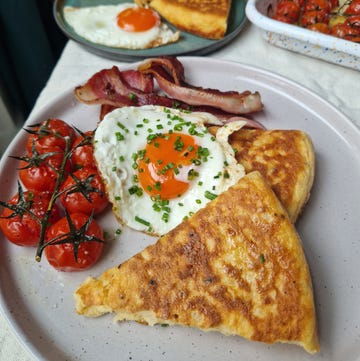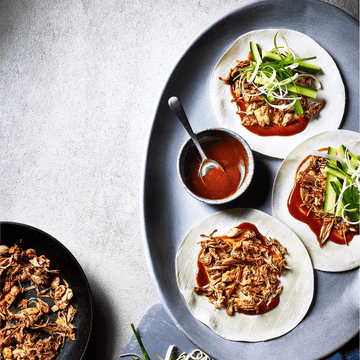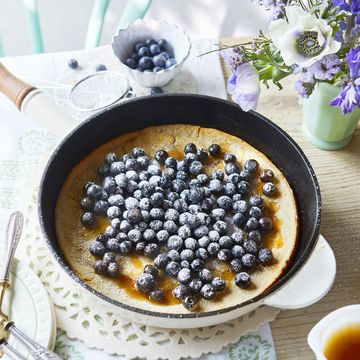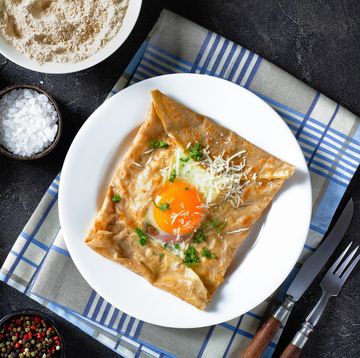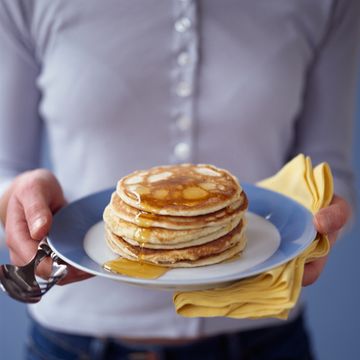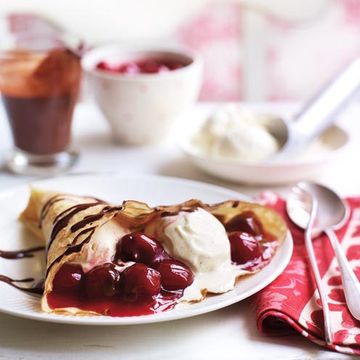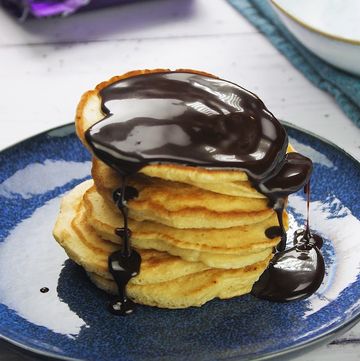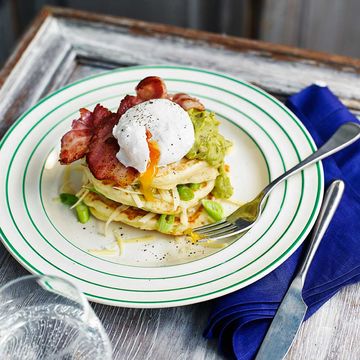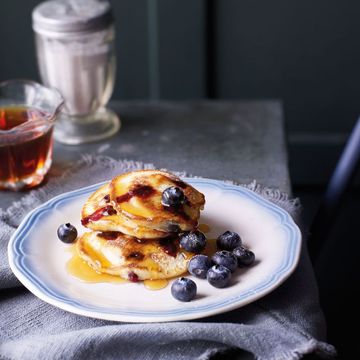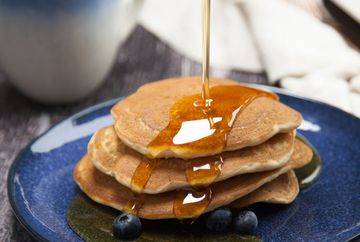Making pancakes for Pancake Day is a real highlight in our calendar, and we love how versatile (and delicious they are). When we refer to pancakes here - we are referring to the thin French version. We love ours doused in lemon and sugar, or filled with ham and cheese for a savoury take. And they make a great option for breakfast, lunch or dinner.
Shrove Tuesday falls on the 17 February 2026 next year and if you're keen to whip up some pancakes (but always struggle to successfully make them), then you've come to the right place.
Here’s our handy 10-step guide on how to make pancakes, as well as how to get the perfect flip. Looking for fluffy American-style pancakes? That's over here.
What to read next
How to make pancake mix
An hour before you want to cook, put 125g plain flour in a large bowl with a pinch of salt, make a well in the centre and crack in 1 large egg. Start to whisk the egg into the flour, then gradually whisk in 300ml semi-skimmed milk to make a smooth batter. Pour into a jug and cover with clingfilm.
Let it rest
Chill the batter for 30-45min. This ‘resting’ allows the gluten in the flour to relax and the starch grains to swell for a lighter pancake. The batter will thicken during this time, so thin it down with a little water if you need to – when you come to cook it, it should be the consistency of single cream. If your batter is too thick, you’ll end up with leathery pancakes.
Get a good pan
A non-stick frying pan is ideal, but you can give a regular frying pan non-stick properties using this simple trick: pour a good layer of sunflower or vegetable oil in the pan with a large spoonful of salt. Swirl the mixture around the pan, heating until the oil is just smoking, then tip the oil and salt into a heatproof receptacle and discard. Carefully use kitchen paper to wipe out any remaining oil and salt (the pan will be very hot), then use the pan to fry your pancakes.
Butter is best
Unsalted, preferably (it contains less water so won’t spit as much). Butter has more flavour than oil, so you’ll get tastier pancakes from it. The best way to fry with it is to heat a little piece in the pan, tip to coat the entire base, then pour away any excess into a bowl.
Hot enough?
To test your pan is ready, sprinkle a few drops of water into it – if it sizzles immediately, you’re good to go.
Give it a swirl
Pour in just enough batter to coat the bottom of the pan, swirling it around to cover the entire base. It might take a couple of goes to work out the right amount, and remember, the first one is often a bit ropey (but an excellent chef’s perk!)
How to flip a pancake
Don’t be tempted to try to loosen and flip the pancake too early, otherwise you’ll end up with a useless blob of batter. Watch for the surface of the pancake to look ‘dry’ (allow about 1-2min) then run a palette knife around the edge of the pancake to loosen it and have a peek underneath to see if it’s looking golden. If it is, you’re good to flip!
Become a champion flipper
First, make sure there are no little ones standing too near and you’re clear of any obstructions. Shake the pan to make sure the pancake is completely loose (it should move around freely). Tip the pan slightly away from you so the pancake slides down towards the edge. With a swift motion, flick the pan up and slightly towards you so the pancake lands on the uncooked side. Tossing isn’t mandatory – though it lacks drama, you might find it easier using a palette knife to get under the pancake and flip it. Cook the pancake for a further 1-2min until golden on the underside.
Keep warm
If you don’t want to serve as you go, preheat your oven to 120°C (100°C fan) gas mark 1/2 and stack the pancakes as you cook them, using a little strip of greaseproof paper in between each to stop them from sticking.
How to serve pancakes
Lemon and sugar or golden syrup are real classics, but as pancakes don’t have bags of flavour, they’re a perfect blank canvas. Try some other combos:
- Nutella and sliced banana
- Your favourite flavoured jam
- Fresh or tinned fruit of your choice
- Lemon or orange curd
- Honey and orange zest
- Apple puree, cinnamon and whipped cream
- Plain yoghurt with a fruit puree of your choice
- White chocolate or milk chocolate chips
Or go savoury:
- Marmite and grated cheese
- Cooked spinach, ricotta and nutmeg
- Bacon and maple syrup
- Smoked salmon, cream cheese/sour cream and dill
To make eight crêpe style pancakes, you will need:
- 125g plain flour
- Pinch of salt
- 1 medium egg
- 300ml milk
- Oil or butter to fry
1. Sift the flour and salt, make a well in the middle and whisk in the egg. Whisk in the milk, then leave to stand for 20mins.
2. Heat a pan and coat lightly with oil or butter. Add a ladleful of batter and tilt the pan to coat thinly.
3. Fry pancake for 1½-2mins until golden, carefully turning once.
A crack team of highly skilled food content producers, the GH Kitchen Team are Good Housekeeping’s resident recipe developers and all-round food obsessives. GH Kitchen Director Sarah Akhurst is our resident hosting pro and loves nothing more than putting on a foodie feast for friends. Senior Cookery Writer Alice Shields is a former pastry chef and baking fanatic who loves making bread and would have peanut butter with everything if she could. Lover of all things savoury, Senior Cookery Writer Grace Evans can be found eating nocellara olives at every opportunity, and will take the cheeseboard over dessert any time. With a wealth of professional kitchen experience between them, they’re dedicated to ensuring every Good Housekeeping recipe is the best it can be, so you can trust they’ll work every single time.




